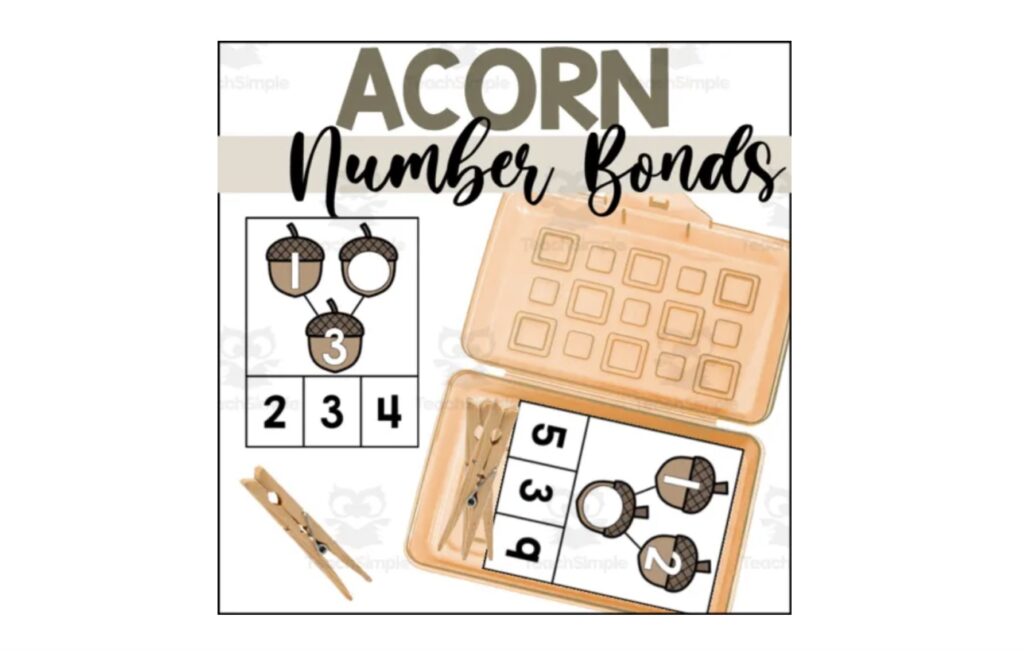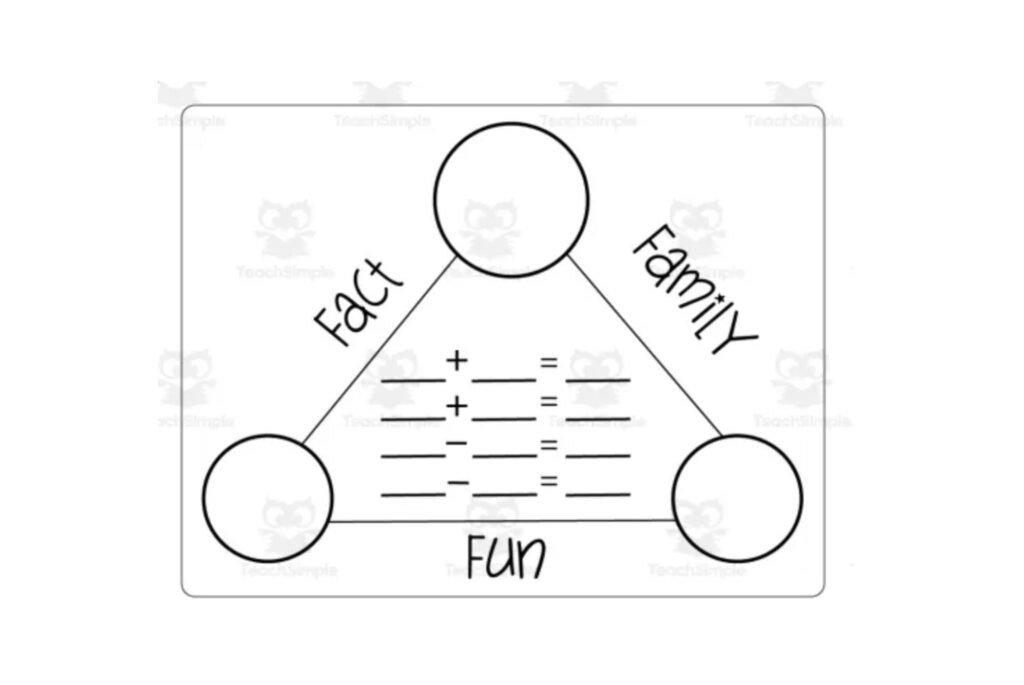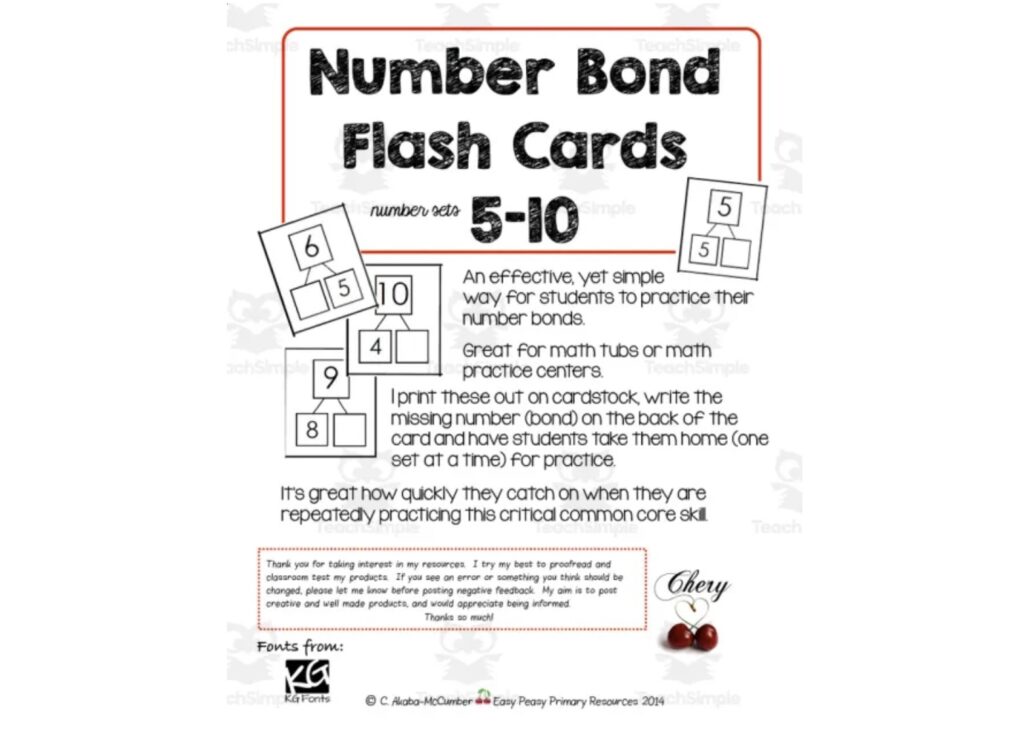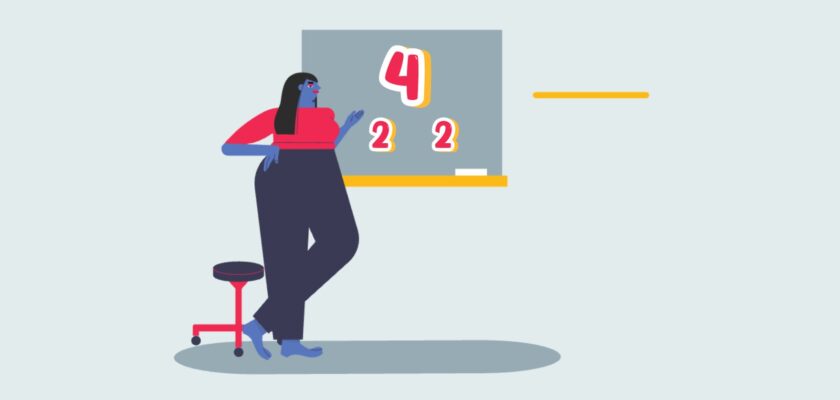Are you ready to unlock the world of number bonds? Join us on a journey that will transform your understanding of math and empower students with essential skills. Get ready to dive into the basics, explore various examples, and learn effective teaching strategies. By the end of this adventure, you’ll be equipped with the knowledge to apply Number Bond in real-life situations and beyond!
Key Takeaways
- Number bonds are visual representations of the relationship between two numbers and their sum.
- Learning number bonds is important for developing a strong foundation in math, mastering addition & subtraction, and applying concepts to real life scenarios.
- Reinforce knowledge with practice activities, fun games & manipulatives, understanding relationships rather than just memorizing them!
Table of Contents
- Key Takeaways
- Understanding Number Bonds: The Basics
- Importance of Learning Number Bonds
- Number Bond Resources
- Number Bond Examples: From Simple to Complex
- Teaching Strategies for Number Bonds
- Number Bonds in Real-Life Situations
- Mastering Addition and Subtraction with Number Bonds
- Number Bonds Beyond the Classroom
- Common Misconceptions About Number Bonds
- Tips for Reinforcing Number Bond Knowledge
- Summary
- Frequently Asked Questions
Understanding Number Bonds: The Basics

So, what are number bonds? Simply put, number bonds are visual representations of the relationship between two numbers and their sum, helping students develop number sense and fluency in math operations. Think of them as a way to break down a whole number into different parts that can be in various proportions. The number bond definition can be extended to not just whole numbers, but also to:
- fractions
- decimals
- negative numbers
- and more
Number bonds follow concrete and pictorial steps.
Let’s look at some examples to make the concept of number bonds more familiar. For the number 10, if 8 is one of the numbers, the other number is 2. Number bonds can be used for addition as well, like grouping similar number pairs to simplify the process. They’re incredibly versatile and can be used to split numbers into more than two or three parts, including addition number bonds.
Diagrams prove effective tools in teaching the concept of number bonds. While the concept might initially appear complex, exposure to various examples and sufficient practice considerably simplifies it. As students become more comfortable with number bonds, they’ll be able to calculate combined sums and differences quickly, making arithmetic a breeze.
Importance of Learning Number Bonds

What compels us to learn number bonds? The answer is simple: number bonds provide a strong foundation for math skills and improve mental arithmetic, offering a significant advantage in tests and assessments. Mastering number bonds equips students with number sense and fluency in math operations, invaluable skills in advanced mathematical concepts and practical scenarios.
Number bonds are essential for building a student’s math knowledge, as they provide the groundwork for more complicated math concepts. Knowing the number bonds to 10 is the first step to understanding other number bonds and helps kids get a better grasp of number sense. Additionally, it’s important to be precise when using and understanding place value, up to number bonds to 20.
Schools emphasize learning number bonds as they offer a sturdy foundation for grasping complex math, including the comprehension of inverse operations such as addition and subtraction. Grasping the composite nature of numbers allows students to do mental math quickly and accurately and perform more complex operations, often emphasized in Singapore maths. Understanding this math concept is crucial for students’ success in mathematics.
Number Bond Resources
Addition Number Bond Clip Cards by The Connett Connection

Dive into the world of addition with these interactive clip cards! Designed to enhance students’ understanding of number bonds, these cards offer a hands-on approach to mastering addition facts. Perfect for math centers or individual practice, each card challenges learners to match the correct sum, fostering both confidence and competence in basic arithmetic.
Number Bond Hearts by Our Strange Class

Celebrate Valentine’s Day with a touch of math! These vibrant Valentine Number Bond Hearts are perfect for students to practice decomposing numbers. With colorful hearts to determine parts and wholes, students can use candy hearts or dry erase markers to find missing numbers. The set includes 2 sets of task cards, a recording sheet, and an answer key, making it a comprehensive and engaging activity for the season of love.
Fact Family Number Bond Work Mats by Easy Peasy Resources

Elevate foundational math skills with the Fact Family Number Bond Work Mats. Tailored for first and second graders, this resource emphasizes the vital connection between number bonds and fact families. The color-coded design ensures an efficient learning experience, catering to each student’s level. With 4 printable pages, these mats are versatile, extending their utility beyond traditional math classrooms and into various subjects.
Number Bond Flash Cards by Easy Peasy Resources

Strengthen number bond proficiency with these flash cards tailored for number sets 5-10. Simple yet effective, these cards provide students with a practical way to practice their number bonds. Ideal for math tubs or practice centers, these cards are a must-have for educators aiming to reinforce foundational math concepts in a fun and engaging manner.
Number Bond Examples: From Simple to Complex

We’ll examine a few examples of number bonds. The number 5 can be represented in multiple ways. It can be seen as the sum of 4 and 1, the sum of 3 and 2, or simply the sum of 5 and 0. As for the number 10, it can be made up of different parts combined together, such as 9 plus 1, 8 plus 2, 7 plus 3, 6 plus 4, or 5 plus 5.
Having discussed simple number bonds, we can now proceed to more intricate ones, such as decimal number bonds. Some examples of more complex number bonds include 20 and 100. Just like with simpler number bonds, the key to understanding these more advanced examples is practice and exposure to various combinations.
In the classroom, the “part, part, whole” method helps introduce number bonds. This technique is effective for allowing students to explore the relationship between the individual numbers and the total sum, ultimately strengthening their number sense and understanding of number bonds.
Teaching Strategies for Number Bonds

Effective teaching of number bonds incorporates games, physical objects, the CPA (Concrete, Pictorial, Abstract) method, complemented by downloadable resources and visual aids. The CPA approach involves three steps: Concrete, Pictorial, and Abstract. In the Concrete step, kids count real-world objects, representing them with counters and sorting them into two groups to figure out the different ways of forming number bonds. In the Pictorial step, kids learn to write number bonds in workbooks or on whiteboards and show them with pictures and illustrations. Finally, in the Abstract step, kids learn to tackle abstract problems using mathematical notations and get the help they need.
Numerous enjoyable methods exist for teaching number bonds, including:
- Games and participatory activities
- “Roll the dice” activity: rolling a die to create a number bond using the number as the whole or using two dice as the parts
- Acting out the Farmer Pete song, which helps kids learn about making 10
These engaging methods make learning number bonds enjoyable for students and promote better understanding.
Creative ways to teach number bonds include:
- Making paper chains
- Using manipulatives like Lakeshore Snap & Slide Number Bonds or creating your own with hangers
- Utilizing online resources, such as printable number bond activities and cookie sheet activities, to reinforce number bond knowledge in the classroom and at home.
Number Bonds in Real-Life Situations
Number bonds can be applied to everyday situations, helping students understand the practical applications of math concepts. For instance, number bonds can be used to work out the total cost of a meal when you know the cost of each item. Developing number sense through number bonds allows students to visualize how numbers can be split or combined, making it easier to solve addition and subtraction problems.
This practical knowledge can be applied to various real-life scenarios, such as calculating discounts, determining quantities in recipes, and splitting bills. Furthermore, mastering number bonds can help with mental math calculations and problem-solving in daily life. By understanding the relationships between numbers, students can tackle complex problems with ease, boosting their confidence and proficiency in math.
Mastering Addition and Subtraction with Number Bonds
As visual demonstrations of how numbers can be decomposed into smaller components, number bonds are crucial for mastering addition and subtraction. By understanding part-part-whole relationships, students can efficiently solve addition and subtraction problems using subtraction number bonds.
Number bond flashcards are a great way to help kids visualize how numbers can be broken down into smaller parts and reinforce their addition and subtraction skills. Not only do these visual aids support learning, but they also emphasize the commutative property of addition, which states that it doesn’t matter the order of the terms when you’re adding them.
To sum up, number bonds:
- visually represent the relationships between numbers
- play a pivotal role in mastering addition and subtraction
- with practice and understanding, students can confidently tackle more complex math problems and excel in school.
Number Bonds Beyond the Classroom
Number bonds, not confined to addition and subtraction, prove versatile learning tools, aiding in division and comprehension of other mathematical concepts. By grasping the connection between addition and subtraction, students can apply this knowledge to division, fractions, and decimals.
This versatility makes number bonds a powerful learning tool that extends beyond the classroom, applicable to a wide range of mathematical concepts, including math facts. Some examples include:
- Basic operations (addition, subtraction, multiplication, division) using mathematical notation
- Fractions and decimals
- Place value and regrouping
- Algebraic equations
- Geometry and measurement
Number bonds serve as a foundation for a deeper understanding of math.
In everyday life, number bonds can be a valuable asset for problem-solving, decision-making, and critical thinking. As students become proficient in using number bonds, they’ll be better equipped to tackle real-world challenges and excel in their academic and professional pursuits.
Common Misconceptions About Number Bonds
We’ll tackle some common misconceptions about number bonds. First, all the circles in a number bond do not have to be the same size for the number bond to be valid. Second, number bonds are not just for addition problems – they can be used to solve subtraction, multiplication, and division problems too.
Another misconception is that number bonds are only used in Singapore math classrooms. In reality, they can be used in any math classroom to help students better understand part-part-whole relationships.
Most importantly, memorizing number bonds without comprehending the part-part-whole relationships they represent, including the inverse relationship between the parts, is not advisable. Understanding these relationships is key to mastering number bonds.
Tips for Reinforcing Number Bond Knowledge
Reinforcing number bond knowledge necessitates practice. Worksheets, activities, and other resources can be used to make learning number bonds fun and engaging. Some examples of practice problems include solving number bonds, completing number bond puzzles, and playing number bond games.
Using manipulatives, creating number bond stories, and utilizing online tools and apps are also helpful for reinforcing number bond knowledge. Engaging resources and activities ensure that students enjoy learning while strengthening their understanding of number bonds.
It’s vital to motivate students to maintain regular students practice, whether in the classroom or at home. Consistent practice, combined with fun activities and engaging resources, will reinforce number bond knowledge and empower students to excel in math.
Summary
In conclusion, number bonds are powerful tools for understanding math concepts and developing number sense. By learning number bonds, students can build a strong foundation in addition, subtraction, and beyond, while enhancing their problem-solving skills in everyday life. With effective teaching strategies, engaging resources, and consistent practice, students will be well-equipped to master number bonds and excel in math.
Frequently Asked Questions
What is a number bond in math?
Number bonds are pairs of numbers that can be added together to form a larger number, like 4 and 6 making 10. They form a foundational part of math and provide a visual representation of how numbers interact.
How do you calculate number bonds?
Number bonds are a way to represent addition mathematically, by pairing two numbers together which can be added up to make a third number, like 4 + 6 = 10. Learning number bonds is one of the earliest and most fundamental parts of learning math.
What is an example of a number bond?
Number bonds are a simple math concept, where two numbers are added together to make a third number, such as 4 + 6 = 10. They are an essential part of math for children to learn. Number bonds are a great way to help children understand the basics of addition and subtraction. They can be used to help children understand the relationship between numbers and how they can be combined to make a larger number. They can also
Why are number bonds important?
Number bonds are essential for developing strong math skills, promoting efficient mental arithmetic, and helping students succeed in tests and assessments.
How can number bonds be used in everyday life?
Number bonds can be applied to everyday tasks like calculating discounts, determining quantities in recipes and splitting bills, making them a useful tool for day-to-day life.
